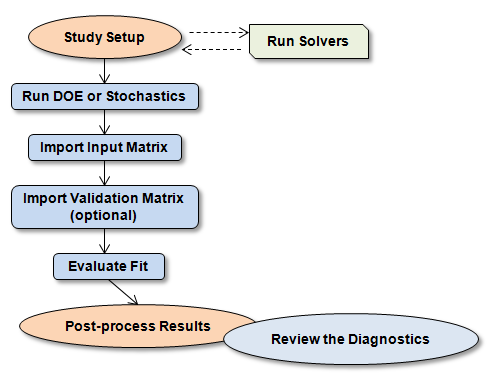Fit Approach Basics |

|

|

|

|
|
Fit Approach Basics |

|

|

|

|
In cases where simulation resources are scarce, the objective is to have a quick trade-off tool and/or noisy output responses need to be smoothened to increase the effectiveness of further studies; you need to consider using fitting functions instead of the exact output responses from simulations.
While working with fitting functions, tradeoff between accuracy and efficiency is ever present. Therefore, it is critical to choose the right fitting methods for your application, as well as a run matrix that is appropriately distributed in the design space. HyperStudy offers several different methods that aim to find the most accurate representation of output responses to fit to a previously run design matrix. It also allows the import of a separate validation matrix that is used to validate the fitting functions at designs that are not used in the creation of the fitting functions.
|

The steps to set up a Fit approach in HyperStudy are: